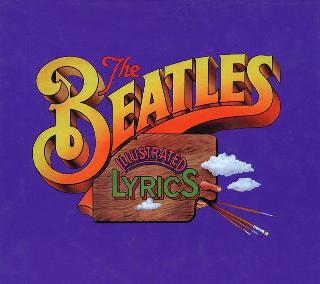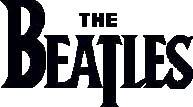Index
Home
Vorige
I'm Only Sleeping
Composer(s) : Lennon and McCartney
Year : 1966
Chords/Tabs: I'm Only Sleeping
Notes on "I'm Only Sleeping" (IOS)
KEY e flat minor
METER 4/4
----- 2X ----
FORM Verse/Refrain -> Bridge -> Verse(half Guitar Solo)/Refrain ->
Bridge -> Verse/Refrain -> Outro (fadeout)
GENERAL POINTS OF INTEREST
Style and Form
- This song is mastered in the extremely unlikely key of e flat minor;
no doubt a side effect of the extent to which the original tapes of
both the backing track and vocals were manipulated on playback; in
opposite directions, no less -- an effect familiar to us from
"Rain."
- I half-wonder if the placement of this track directly following the
e-minor tonality of
"Eleanor Rigby" was done intentionally, to highlight
the half-step downward in key. But at any rate, I'm going to discuss
it below in terms of e minor, simply in order maintain some semblance
of orthographic legibility. If you don't think it makes a difference,
try sight-reading, some time, the sections of the WTC written in
e-flat (or even better, d#) minor :-)
- We have an interesting formalistic ellision here in the way that
the bridge melds so seamlessly with the verse that follows it that
the next verse at first sounds like the ending the bridge rather than
the start of something else; and in retrospect, the bridge, per se, seems
like only a fragment of something. This example, by the way, bears
intruiging comparsion with
"She's A Woman", of all things; do check
it out.
Melody and Harmony
- The tune features a patter-song-like hammering away on the tonic
note of the scale, though the verse still manages to lazily spread out
over the span of a full octave. The brief bridge section features
a couple of bent notes which lend a touch of the blues.
- Compared to the several drone-like songs we've looked at most recently,
this one has a larger number of chords in it than we've seen in quite a
while, though none of them are particularly exotic choices.
- The most curious harmonic feature of the song is the use of a chord stream
(i.e. step-wise root movement of chords) in the refrain, the likes of which
we haven't seen since the very early days of
"Ask Me Why,"
"Do You Want to Know a Secret,"
and "P.S. I Love You."
Arrangement
- What must have started out on the source tape as a backing track of
relatively straightforward instrumentation was slowed down a bit to
add that certain grainy/chunkiness on playback. Similarly, the speeding
up of John's vocal on playback makes him sound tremulous and eerie; the
latter effect being further intensified by the manner in which the
automatic-double-tracking is split out onto the two stereo channels
for only *some* of the phrases; compare this with
"The Word."
- The backwards-mastered guitar licks are a special effect that have
nicely weathered the march of time losing none of their popularity
nor their ability to transfix, though the background story regarding how
George carefully practiced his guitar bits so that they would sound fine
when mastered backwards after being played forwards is, by our own
contemporary standards of digital control, rather quaint. True to
their, by now, well-established penchant for layered arrangements,
the application of the reversed guitar bits first starts in the
*second* verse.
- The backing vocals add their own little touch of surrealism to the
the procedings. Their echoing of the last line of each verse and
"oodle-i-doo" falsetto harmonies of the refain have something of an
Andrews Sisters/1940s kind of unsettling resonance. Only Paul's bluesy
counterpoint in the bridge sounds a bit more familiar in context of
the Beatles.
- Paul uses walking-bass passing notes in two critical places here,
thus providing a subtle effect of unification: at the end of the verse,
he fills out the space between the C and a chord with a melodic
B, and similarly, near the end of the short bridge, he fills out the
space between the a and F chords with a G. Granted, these are exceedingly
small touches, but if you "know" this song and like it well, I'd bet
you've noticed them even if you haven't done so consciously. Or put
it this way -- try and imagine hearing the song *without* them!
SECTION-BY-SECTION WALKTHROUGH
Verse
- The verse is a surprisingly odd nine measures in length, in spite of
its obvious AA' phrasing:
|e |a |G C |G B |
e: i iv III IV III V
---- 2X!!-------
|e |a |G C |- a |
i iv III VI iv
- Both phrases are harmonically open but in different ways. The first
one ends on V, nicely begging a reprise. The second one rhetorically
adds that one extra measure, and then ends on VI --> iv, thus begging
for something "different" from what was heard previously.
- In the always relevant department of Foolish Consistency Avoidance,
we have the verse with the guitar solo filling out only the five
measures of the A' section. Actually, the "real" aesthetic lesson
being taught in this instance is not so much one about non-consistency,
as much as it is a one regarding the Conservation of Special Effects.
Refrain
- The chord stream of this refrain, not to mention the prominence of
that juicy C Major 7th, is a prime source of what gives this song its
overall jazzy feeling.
- The section is a somewhat unusual length of six measures, and its
internal phrasing is remote from anything in the nature of a balanced
binary form. Rather, we have a 1-measure's worth of tune that chases
its tail several times within a narrow range before petering out entirely
before the end of the fifth measure:
|G |a |b |a |
III iv v iv
|C7 | ||e |- |
VI i
- The refrains that precede each of the two bridges are extended by an
additional two measures of a time-stopping vamp on the i chord. The
second one of these extended refrains (i.e. the following the guitar
solo) includes some muted, errant talking in the background, followed
by a strange foghorn-like electronic sound during the e minor vamp.
- The refrain is harmonically quite elliptical. Its opening measures
convey intimations of a shift toward the key of G (the so-called Relative
Major of e minor), though nothing approaching the finality of a complete
modulation is in the offing. For that matter, the manner in which the
home key of e is confirmed at section's end is also done without clear
or complete cadence.
Bridge
- No matter how you parse this section, it somehow seems to fall out as
incomplete or fragmentary. Even if you add in what I call the two-
measure vamp at the end of the refrains into *this* section, I believe
there is no escape from hearing, at first, what turns out to be the
first phrase of the next *verse* as though it were the second phrase
of *this* bridge:
|d |E |a |F |
e: vii
a: iv V i VI
- As with the refrain, we have yet another tentative harmonic foray, this
time toward the key of a minor. The formal ellision between this bridge
and following verse is somewhat disguised the way that this modulation
fools you into hearing the first two measures of the next verse as still
being in a minor, with the pivot back to e first coming near the end
of the first phrase, as follows:
|e |a |G C |G B |
a: iv i VII III VII
e: III V
Outro
- As an "outro", per se, this one is rather unusual in both form and
substance. At the end of the final refrain, where previously we
have had the C Major 7th/e minor bass arpeggio, this time the
backing abruptly, even awkwardly, just stops, leaving the backwards
lead guitar to "noodle" all alone into a fadeout.
SOME FINAL THOUGHTS
- This song belongs to a special category of Beatles songs in which
"content" plays a secondary role to "gesture". I define "content,"
in this context, as the relative level of special care and quality
lavished on the basic musical elements of tune, chord, and form; and
"gesture" as a focus on the bedazzling and disorienting overall effect
to be achieved by the incongruous combination of familiar yet disparate
stylistic cliches that are not usually found under the same roof,
plus the overlay upon one or more of these elements of surreal special
recording studio effects.
- That the Beatles were great innovators of new styles synthesized
from among the elements of disparate influences is widely celebrated.
But the kind of gesture we're dealing with here, where one or more
cultural readymade is exploited for its very hackneyed recognizability
is an achievement of a slightly different nature. In this particular
instance, we have a strange montage of the boozy/jazzy ride-beat, the
patter song tune, the cooing backing vocals, combined with that lead-guitar
that is distorted on playback.
- The amazing thing is to ponder not only how much this peculiar type of
parody would flower in the Post-Pepper-Period, but the extent to which
you'll note how its roots were embedded deep, all along, if only you
look back with an eye toward discerning them.
- It wasn't only the in the music, either! What better example of
a surreal montage made of found pop-cultural-objects can you think
of in the realm of album cover art than the pseudo-photographic
black-and-white job done by Klaus Voorman for our _Revolver_?
Regards,
Alan (awp@world.std.com)
---
"Give me a bottle of milk and some tranquilizers." 032094#94
---
Copyright (c) 1994 by Alan W. Pollack
All Rights Reserved
This article may be reproduced, retransmitted, redistributed and
otherwise propagated at will, provided that this notice remains
intact and in place.
Ook op Yesterday and Today:
Ook op Revolver:
(c) 2024 Serge Girard


 (c) Alan Aldrigde, The Beatles Illustrated Lyrics
(c) Alan Aldrigde, The Beatles Illustrated Lyrics